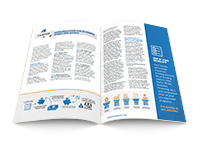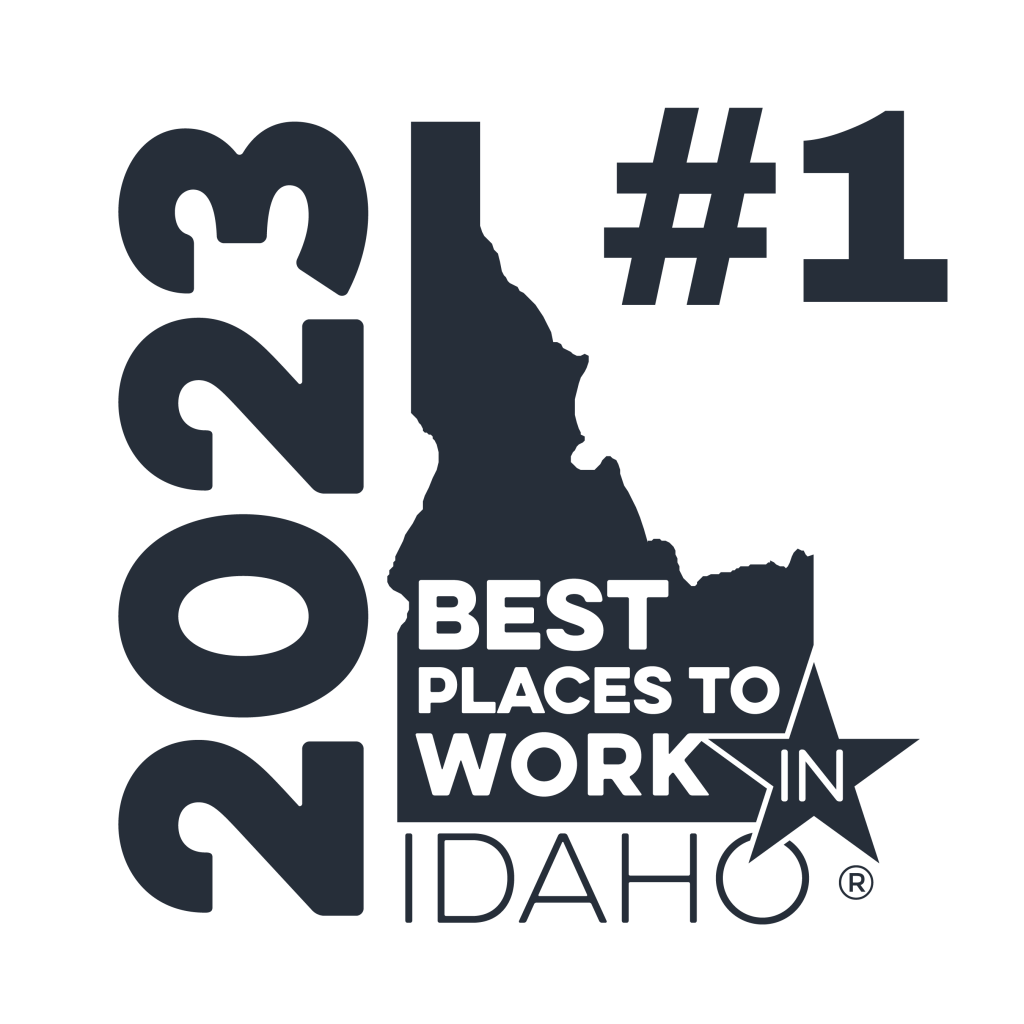How Rollovers for Business Startups Works
Chances are, you have retirement savings sitting in a 401(k) or similar type of retirement account. If you’re also considering starting a small business venture, whether LLC or sole proprietorship, you may be surprised to find out you can use your retirement assets, or eligible 401(k) funds, to start or buy a business. Keep in mind you will encounter both startup costs and additional costs for marketing and other business operations. There are a variety of types of small business loans, and some can be hard to secure if you have a lower credit score or are new to business and don’t have a strong track record of experience. That’s why 401(k) funding — also known as Rollovers as Business Startups — is an excellent option that allows you to tap your qualified retirement account to start your business debt-free.
Rollovers as Business Startups (ROBS) has paved the way for thousands of individuals to achieve their entrepreneurial dreams by using their retirement assets. The structure does have a variety of requirements and moving pieces so keep reading before you jump in. Let’s look at some of the dos and don’ts of ROBS to help guide you through this complex transaction process so you ensure you don’t end up with a financial risk that could have you paying a withdrawal penalty. When you follow all of the transaction rules, ROBS can be a smart choice for prospective business owners to utilize their qualified retirement plan funds to start a business.
The 10 Do’s and Don’ts of Rollovers for Business Startups (ROBS)
Regardless of your type of business, you can use 401(k) financing, or ROBS, to fund your small business venture. ROBS is one of the forms of financing that does have eligibility requirements as well as annual requirements. By knowing the do’s and don’ts of ROBS, you can avoid errors with your plan that could result in a taxable distribution – meaning you would have to pay taxes like your rollover was an early withdrawal.
A taxable distribution because of the ROBS structure almost never happens when you work with an experienced ROBS provider, such as Guidant Financial. A good financial advisor will help you navigate the process and educate you on do’s and don’ts to ensure the highest chance of success for you, your plan, and your business. If you’re a prospective business owner working with the Guidant Financial team, rest assured we’re always here to help you through the funding process, if needed. We can discuss the setup process of a business financing strategy that includes different types of financing options, from ROBS plans to bank loans to personal savings and more. If you choose to use ROBS, we can help you with every step of the process and guide you through the legal requirements, compliance requirements, and qualification requirements.
Below is a list of the guidelines for using ROBS, categorized by specific areas of the business. This list isn’t based on a hierarchy of importance. Instead, it’s a reference when thinking about using or changing your ROBS setup.
The Dos and Don’ts of ROBS
1. Offer Qualified Employee Securities (QES) and the 401(k) Plan to Employees
DO — Offer your employees the opportunity to participate in the 401(k).
DON’T — Create barriers or obstruct employees from participating in the 401(k). The fourth pillar of ROBS says that the employer of a ROBS business must offer the right to purchase stock in the company with their retirement money. You, as the owner of the company, must offer the opportunity for your employees to use their retirement funds to purchase stock in the company.
You’re required to make the offer when the employee is hired — but the employee probably won’t take it. So, if you hire additional employees, make sure that’s part of your benefits package. An employee is unlikely to remove their money from liquid and more customary investments like a publicly-traded company where they can cash out any time to put it into your privately-held business, where they can’t cash out until you sell the business. Since 2003, Guidant has funded over 30,000 small businesses with ROBS.
2. Maintaining Active Business Status
DO — Maintain an active business/operating company.
DON’T — Shift into a passive business model. This stems from the third pillar of ROBS, which requires your business to be an “active operating company.”
Most businesses and franchises meet these operating criteria. Business ventures that are eligible don’t include lending, investing, or single investments in real estate. Real estate does present a grey area: you can fund a property management or Real Estate Operating Company, but qualifying as “operating” depends on the scale of the venture.
And one more thing: your business must be legal on the federal level. For example, though marijuana is legal in many states, it still hasn’t been legalized by the federal government. Even if you live in a state where pot shops are legal, typically you can’t use ROBS to fund one. Some of the more risk-tolerant ROBS providers may move forward with a business like this, but note that the Internal Revenue Service (IRS) hasn’t given approval to ventures that aren’t federally legal.
3. Maintain Active/Actual Employee Status
DO — Maintain your position as an active, bona fide employee who takes a salary.
DON’T — Become a passive employee. To be an eligible employee, you must pay yourself a salary and you can’t be a silent investor. The fifth ROBS pillar states that all business owners with qualified employer stock (QES) must be active employees of the business. This isn’t a requirement for any business partners who use funding other than ROBS. Keep in mind that the active status doesn’t specifically state the type of work you do. You could work the register, manage inventory, or serve on the board of your corporation. But this pillar does mean you can’t be a passive investor in your friend’s wine bar or use ROBS to buy a franchise for your spouse or child and not be involved.
4. Corporation Status
DO – Maintain your status as a C corp for the life of your business under ROBS.
DON’T – Change your entity type, no matter who tells you to. There are horror stories where a CPA or tax attorney who isn’t familiar with ROBS has advised clients to shift to another type of corporation or business structure. Common business structures include corporations, partnerships, limited liability companies (LLCs), s-corporations, and sole proprietorships. These professionals who have misled small business owners likely weren’t well versed in ROBS. You should contact your plan administration/plan provider team or outside counsel before making ANY changes. A change to another business entity could result in a taxable distribution on your rolled-over funds. That means all the rollover funds could get hit with an early withdrawal fee – as if you pulled them directly from your 401(k) plan.
5. Avoid Creating a Taxable Distribution
DO – Follow all the rules of ROBS set forth by your provider and the Internal Revenue Service (IRS) and Department of Labor (DOL).
DON’T – Ignore any of the five pillars (we’ll recap them below). If even one of the five pillars is ignored, the whole structure becomes unstable. This can result in heavy penalties from the IRS.
6. Federal Law Governs Your Plan, Not State Law
DO – Follow all federally legal activities in your day-to-day business activities and business in general.
DON’T – Attempt to use state laws in managing and choosing your business. The law that allows ROBS to exist is through the IRS, so it must follow federal law.
Let’s have a quick recap of those 5 pillars, just for fun:
1. Client’s Duty of Prudent Investment
You have a fiduciary duty to wisely invest your retirement funds. Since any investment is inherently risky, this generally means “sound and prudent investments.”
2. Adequate Consideration for Fair Market Value
Your plan can’t pay more than market value for stock in your business. Simply put, don’t attempt to scam or rip off the 401(k) plan.
3. Corp Must be an Operating Company
Your business must offer goods or services in exchange for money.
4. Employer Must Not Discriminate Against NHCEs
You must offer the option to participate in the 401(k) plan to all employees. Not just highly compensated ones.
5. All Rollover Participants Must Be Bona Fide Employees
You must be an active employee of the business.
Dos and Don’ts Continued
7. File Your Documents Every Year – Including Form 5500
DO — Remember to file your business taxes every year – at both the federal and state levels, if applicable. Remember, you must file your corporate taxes on your own.
DON’T — Forget to file your taxes and Form 5500. Don’t wait until the last minute to complete these essential annual responsibilities. Your plan administration service provider won’t sign and file these documents for you — only you can file with the IRS. It’s important to have this ingrained in your annual processes to meet your obligations to the IRS. Your plan administration service provider will walk you through the steps each year. Missing filing on time could result in adverse tax consequences such as a tax penalty!
8. Always Make Prudent Investment Decisions for Your Business
DO – Make prudent investment decisions as it relates to your business under ROBS.
DON’T – Make poor investment decisions. You’re a trustee of your corporation and your retirement plan is the beneficiary. This means you have a fiduciary duty to wisely invest your retirement funds. Since any investment carries an inherent risk and may or may not turn out to be beneficial to your retirement plan, it’s important to make sure you do thorough due diligence.
9. Adequate Consideration for Fair Market Value
DO – Pay Fair Market Value (FMV) for stock purchased by your C corporation for the plan.
DON’T – Rip off your plan by paying more than Fair Market Value (FMV) for the stock you buy with the C corporation. This second pillar of ROBS is best described by Guidant’s original Corporate Counsel, Joe Wishcamper, “Thou shalt not rip off the plan.” In other words, the plan can’t pay more than Fair Market Value for the stock it purchases in the C corp. FMV is a price determined between a willing buyer and a willing seller. Both must be familiar with the essential facts of the deal, be under no “extraordinary compulsion” to buy or sell, and can’t be related.
If the buyer and seller are related (familial, or the client is refinancing her own business), it’s crucial to have FMV determined by an independent, third-party appraiser. This was it’s ensured that a fair price is set for both the buyer and the seller. All in all, Wishcamper’s definition is an excellent rule of thumb: as long as you don’t rip off the plan, you’re fine.
10. Termination of the Program – Closing or Sale of Your Business
DO — Remember that if you close or sell your business, you still need to complete your corporate taxes, Form 5500, and any other state or federal annual requirements. It’s also very important you consult your plan administration team and outside counsel throughout this process.
DON’T — Think that closing or selling your business is the last step in exiting your ROBS structure. Just because your company’s doors are closed doesn’t mean your 401(k) plan and other aspects of the structure are. You’ll need to complete your taxes and Form 5500, as per usual, for that plan year. The IRS takes these things seriously. They will subject you to penalties if the requirements aren’t appropriately completed.
For more details on the dos and don’ts of ROBS, please reach out to one of Guidant’s professionals. We want you to be one of our ROBS success stories!
If you’re already using the ROBS structure and have questions about ongoing compliance or compliance rules, reach out to our Client Services team, your outside counsel, and your CPA to address any changes you’re considering. This will help ensure the smoothest transition and avoid any penalties from the IRS.
For more information, please refer to the IRS guidelines for ROBS programs.
Pre-Qualify Today!



















